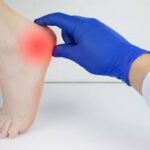An orthopedic surgeon is a medical professional trained to diagnose and treat musculoskeletal conditions, including sports injuries. When an athlete experiences pain, swelling, or loss of mobility, these specialists conduct a thorough evaluation. The first step often involves reviewing the patient’s medical history and discussing details of the injury, such as how it occurred and when symptoms began. Physical examinations are also performed to assess strength, range of motion, and stability in the affected area. In many cases, imaging tools like X-rays or MRIs may be ordered to provide a clearer view of bones, joints, and soft tissues. The goal is to determine the root cause of discomfort and rule out conditions that may mimic sports-related injuries. This careful diagnostic process allows orthopedic surgeons to create a personalized treatment plan that aligns with the patient’s activity level and long-term goals.
What Diagnostic Tools Do Orthopedic Surgeons Use?
Orthopedic surgeons rely on a combination of hands-on assessments and advanced technology to reach accurate diagnoses. Imaging is one of the most common tools, with X-rays helping reveal bone fractures or alignment issues. MRI scans provide detailed images of soft tissue injuries such as ligament tears, tendon damage, or cartilage wear. CT scans may be used in more complex cases where bone or joint injuries require high-resolution views. Ultrasound can also be applied to detect real-time soft tissue movement, which helps identify subtle injuries.
In addition to imaging, functional tests such as strength assessments or balance evaluations give further insight into the injury. By combining these methods, surgeons gain a comprehensive understanding of the condition. Treatment plans from an orthopedic surgeon often depend on the severity and type of injury. For minor conditions, conservative approaches such as rest, physical therapy, and bracing are commonly recommended. These methods aim to reduce inflammation, restore strength, and allow the body to heal naturally.
More complex injuries may require minimally invasive procedures, such as arthroscopy, where small tools and cameras are used to repair damaged tissues. In severe cases, open surgery might be necessary to reconstruct ligaments, repair fractures, or replace damaged joints. Orthopedic surgeons also work closely with rehabilitation specialists to design post-treatment recovery programs. This teamwork helps athletes regain function and safely return to their sports activities. Every treatment is designed to balance effective healing with the athlete’s desire to return to play as quickly as possible.
What Role Does Rehabilitation Play in Recovery?
Rehabilitation is a key part of the treatment plan after a surgeon addresses a sports injury. The recovery phase often includes physical therapy, which focuses on rebuilding strength, improving flexibility, and correcting movement patterns. Rehabilitation programs are personalized and progress gradually, starting with basic exercises and moving toward sport-specific training.
Pain management techniques such as ice, heat, or targeted stretches may also be included to support comfort during healing. In addition to physical therapy, education plays a role in preventing future injuries. Athletes may receive guidance on proper warm-ups, conditioning programs, and safe techniques for returning to play. The partnership between surgeons, physical therapists, and patients is vital for long-term success. With consistent participation, rehabilitation helps reduce re-injury risks while supporting a full return to athletic performance.
Consult With an Orthopedic Surgeon
Sports injuries can be disruptive, but with the help of an orthopedic surgeon, diagnosis and treatment become manageable steps toward recovery. These specialists use advanced diagnostic tools, a range of treatment options, and coordinated rehabilitation strategies to restore mobility and strength. Whether the injury is mild or severe, the expertise of an orthopedic surgeon can help athletes return to their sports with confidence. If you are currently experiencing pain or limited function from a sports injury, seeking a consultation is the next step.







